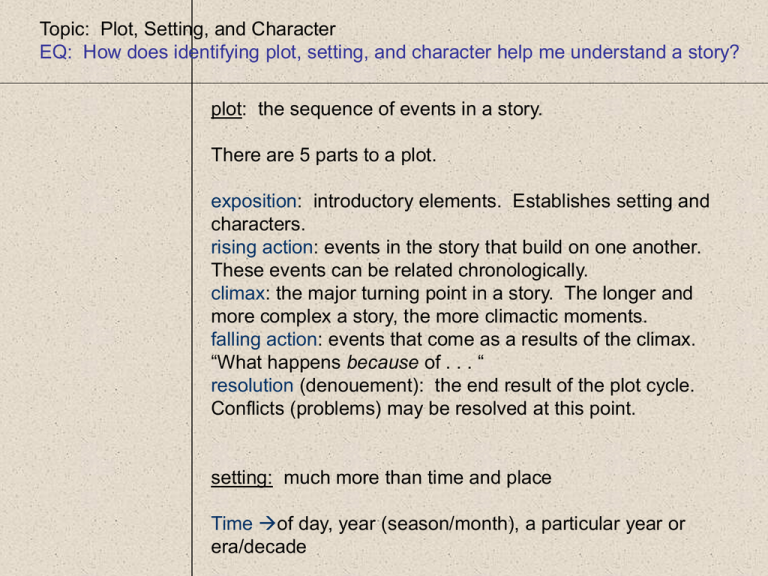Topic: Plot, Setting, and Character
advertisement

Topic: Plot, Setting, and Character EQ: How does identifying plot, setting, and character help me understand a story? plot: the sequence of events in a story. There are 5 parts to a plot. exposition: introductory elements. Establishes setting and characters. rising action: events in the story that build on one another. These events can be related chronologically. climax: the major turning point in a story. The longer and more complex a story, the more climactic moments. falling action: events that come as a results of the climax. “What happens because of . . . “ resolution (denouement): the end result of the plot cycle. Conflicts (problems) may be resolved at this point. setting: much more than time and place Time of day, year (season/month), a particular year or era/decade Place location (general or specific) Setting can effect a reader’s understanding of a story. Example: If a story takes place in the Old West, how would an alien invasion be handled? (weapons, technology, etc.) character: individuals that participate in the action of a literary work. They usually have motivations (reasons) for their behaviors. Main character most important character (protagonist) Minor character less prominent characters. They support the plot. Dynamic character one that undergoes change in the story because of his/her actions and/or experiences. Static character character that remains the same throughout the story. Round character one who is complex and highly developed with a variety of traits. Flat character not highly developed; one-sided character. Usually has only one real trait, characteristic, or role. It is through characters, the reader engages in the story. By analyzing characters, you can get more out of the stories you read and gain better understanding into human nature. Summary: (answer to EQ)



